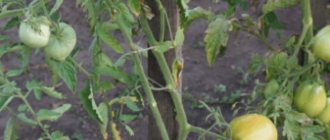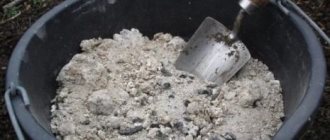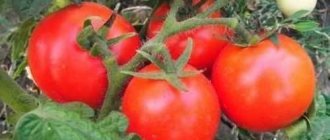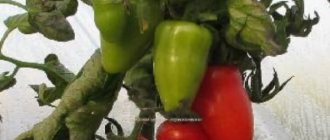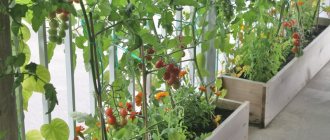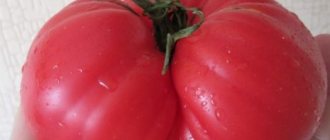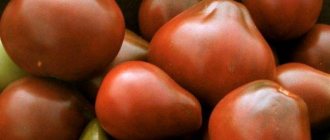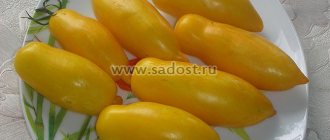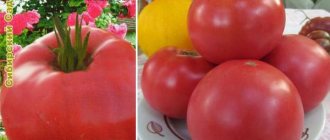Description of the tomato variety Ildi with photo
Tomato Ildi is a long-known variety of small orange tomatoes. Due to the small size and characteristic shape of the fruit, it is classified as a cherry tomato. The exact origin of the variety is unknown - there is evidence that it was previously bred in the GDR. Based on this, we can say that Ildi is not a new product, although it is not yet very widespread in Russia.
Variety characteristics:
- indeterminate (grows throughout the growing season);
- tall - on average 130-170 cm, although in a greenhouse it reaches 200 cm;
- early - ripens within 90-95 days from the moment the first shoots appear.
The bush is tall, well leafy, grows quickly and branches actively. The leaves are medium sized, bright green. Flowering is abundant - the inflorescences in appearance resemble a cluster or bouquet of numerous light yellow flowers. The first inflorescence begins to form above the 8th or 9th leaf, and the subsequent ones occur every 2. On 1 bush, a lot of small Ildi tomato fruits are formed - depending on the growing conditions, from 45 to 70.
The length of the Ildi tomato inflorescences reaches 20-30 cm
Description of fruits
The fruits of the Ildi tomato are oval, almost ideal in shape. The surface is glossy, without defects. The weight of 1 tomato is small - only 15 g. The color is light orange, rich yellow. The skin is quite dense, but not tough. The taste is assessed as typical for cherry - sweetish, rich, balanced.
Russian varieties of Ildi tomato are distinguished by their regular, rounded shape, with an average of 50-60 fruits formed on 1 branch
Important! Imported varieties of Ildi tomato are more productive - 65-70 fruits are formed on the branch. However, their shape is not oval, but elongated. In terms of taste, they are approximately the same.
Prevention of diseases and pests
Ildi variety tomatoes are resistant to many diseases. Late blight diseases of bushes are not observed in the practice of experienced gardeners.
However, tomatoes of this variety are susceptible to root rot and leaf spot. Therefore, prevention is indispensable. As mentioned earlier, it is recommended to add wood ash to the soil to prevent blackleg. To prevent spotted rot, tomatoes are sprayed with wood ash extract, soda solution, as well as solutions of manganese, iodine and boric acid.
The first spraying is recommended to be carried out no earlier than 2 weeks after planting the bushes on permanent soil, and the second - after a week's break.
In the reviews of gardeners you can find information that the most effective way to combat diseases of the upper part of the bushes is a two-day infusion of celandine , for which you take 8-9 liters of water and at least 1.5 kg of chopped fresh grass. Spraying is carried out using a spray bottle. Repeated treatment is carried out no later than after 7-8 days.
As for pests, most often these are aphids and, oddly enough, wasps. To combat these insects, use special chemical solutions or soap solutions, infusions of garlic, wormwood or hot pepper.
Characteristics of Ildi tomato
The Ildi tomato can be classified as a high-yielding variety, since from one bush you can get 3-4 kg of tomatoes, which have time to ripen right on the branch. At the same time, the yields are not only high, but also stable (especially in greenhouse conditions).
Ildi tomato yield and fruiting
Tomatoes ripen on average in 90-100 days from the moment the seedlings first emerge. Therefore, when planting seeds in early March, the first fruits can be harvested as early as mid-June. A characteristic feature of Ildi tomatoes is uneven ripening. Therefore, you can often see both green and already ripe tomatoes on the bushes. In general, fruiting lasts 2 weeks.
Productivity under different growing conditions is described in the table.
| Conditions | Greenhouse | Open ground |
| From 1 bush, kg* | 3,5 | 3 |
| From 1 m2, kg | 10,5 | 9 |
*Calculation of yield is based on planting 3 bushes per 1 m2.
At the same time, the yield indicator strongly depends on the quality of care:
- It is better to grow in a greenhouse, where tomatoes are reliably protected from sudden temperature changes.
- It is better to form the bush into one stem. Thanks to this, record harvests of up to 27 kg of fruit per 1 m2 are sometimes collected.
- Regular watering - 2-3 times a week.
- Regular fertilizing - on average every 2 weeks.
Attention! In the climatic conditions of the Urals and Siberia, Ildi tomatoes are recommended to be grown only in greenhouses.
Area of application of fruits
The purpose of the Ildi tomato fruit is universal:
- fresh consumption;
- use in salads;
- preparation of canned vegetables;
- salting and pickling for the winter.
Since the fruits are small, they are very convenient to use for whole-fruit canning. They can be packed tightly: the tomatoes are placed compactly in a jar and salted well.
Resistance to diseases and pests
The Ildi variety is characterized by high resistance to various diseases, primarily to fungal infections. It is known that it is practically not affected by late blight and rarely suffers from other diseases. But the risk of leaf spot disease cannot be excluded, which can be associated with both a fungal and viral infection. Among insects, aphids are especially harmful.
Advice! Preventive treatment of seedlings and beds is mandatory. For this purpose, both drugs and folk remedies are used.
Susceptibility to diseases. Harvest volume and application
Resistant to many diseases. Including late blight. There is no need for special treatment of seeds and adult tomato plants.
See also
Description of the tomato variety Khorovod, its characteristics and cultivationRead
The productivity is high; with proper formation of the plant, you can get a rich harvest of tomatoes of the same size. Approximately 3 kg per plant.
Most often, the fruits are used for whole canning and assorted preparation. But they are also consumed fresh.
Advantages and disadvantages of the variety
Ildi is a high-yielding variety of tomatoes with high taste. Even with minimal care, you can harvest 3-4 kg of ripe tomatoes from 1 bush.
Ildi tomatoes always grow in beautiful, lush clusters
pros
- ripen in just 90 days;
- the taste is sweet, bright;
- long-term preservation of presentation;
- good tolerance to long transportation;
- universal purpose;
- high immunity to many diseases and pests;
- yields are stable.
Minuses
- it is necessary to tie it to the support, not only the stems, but also the brushes;
- pinching should be carried out every 10 days;
- fruiting is not simultaneous (although many perceive this disadvantage, on the contrary, as an advantage).
Description and characteristics of the variety
The Ildi cherry tomato is an indeterminate plant with a bush height of 180-190 cm. The first cluster is planted above the 9th leaf. The fruits are oval, yellow, weighing 10-15 g. 50-70 plum-shaped tomatoes with dense pulp and strong skin ripen on a cluster. The variety is an early ripening variety, the fruits ripen 80 days after germination.
Ildi’s brushes are remarkable – they resemble a fan in shape. A huge number of yellowish corollas are laid on the brush. Almost every flower sets, forming a fruit.
Features of cultivation
Growing Ildi tomatoes is generally no different from a number of other varieties. However, there are 2 features that you need to pay attention to:
- The variety is early, seedlings grow quickly in good conditions, so it is better to sow them 50-55 days before transferring them to the greenhouse. The approximate date for the middle zone is mid-March, for the south of Russia - the beginning of the month.
- The seeds are very small, so you should work with them carefully, otherwise you may lose them. There is no need to deepen them when planting - just sprinkle them with soil so that the depth is purely symbolic (3-4 mm).
The technology for growing seedlings looks like this:
- Soil for seedlings can be purchased at the store or made independently: garden soil and peat (1:1), a pinch of ash. Disinfect in a weak solution of potassium permanganate 2 weeks before planting.
- Before planting, Ildi tomato seeds are also pickled in a solution of potassium permanganate.
- Take plastic cups or peat pots, fill them with soil and moisten them.
- Planted at a minimum depth and covered with film.
- They are grown under film at a temperature of 25 degrees and constant additional lighting (12-13 hours).
- After 2 weeks, they dive (2-3 leaves should appear).
- 2-3 weeks before transferring to the greenhouse, they are hardened at a temperature of 15-18 degrees.
- As soon as the stems acquire a purple tint, the seedlings can be transferred to open ground.
Planting pattern: 50 cm between bushes and 60 cm between rows. Further standard care:
- Regular watering.
- Fertilizing (peat, compost, humus, ash) every 2 weeks. Can be alternated with complex mineral fertilizer.
- Immediately after transplanting, mulch the soil with straw, peat or spruce branches.
- After a few weeks, carry out pinching, forming a growth of 1 stem.
- Tie to a trellis or other support.
Ildi tomato bushes must be tied to a reliable support
Advice! Seedlings can be fed with chicken droppings or any other organic fertilizer 3-4 times with an interval of 10-15 days.
Care instructions
If bushes are planted on open ground, you should wait until the end of spring night frosts so that the air temperature does not drop below 12-14 degrees Celsius, and the soil is warmed up to 15-16 degrees. Under changeable or unpredictable weather conditions, plants should be planted at the end of May or as early as the beginning of June. If after planting the bushes frosts return or the temperature is below 10 degrees Celsius, the bushes will stop growing and will not be able to produce the expected harvest.
When preparing the soil, it is necessary to carry out autumn fertilization with organic substrates and dig up the soil itself. This applies to peat, humus and compost. Since the variety is extremely vulnerable to blackleg damage, it is recommended to treat the soil by adding reseeded wood ash. Before sowing, the seeds themselves are soaked for 20–25 minutes in a bright pink solution of potassium permanganate.
It is recommended to tie growing brushes every 10 to 12 days. The trellis method is best suited for this. Mandatory care requirements include:
- regularity of watering and fertilizing with mineral fertilizers;
- loosening the soil in order to fully supply the root system with oxygen;
- mulching the soil at high air temperatures and prolonged absence of precipitation.
Since Ildi tomato bushes are indeterminate, it is necessary to pinch the tops of the stems. This will allow the consumed nutrients to be directed to the development and ripening of fruits, and not to further growth of branches. It is optimal to carry out pinching after the appearance of 4–5 brushes on the bushes.
Pest and disease control
Despite the high resistance of this variety to various diseases, it is useful to carry out preventive treatment with a weak solution of Bordeaux mixture (0.5%) immediately after transplanting into open ground. For the prevention and treatment of fungal pathologies (gray rot, Alternaria), other fungicides can be used:
- "Idol";
- "Maksim";
- "Topaz";
- "Skor."
In case of aphid infestation, you can use folk remedies. For example, an infusion of onion peels or crushed garlic, a solution of mustard powder, baking soda, and laundry soap shavings are often used. The concentration is selected so that the active substance is approximately 1-2% of the volume of water.
If there are too many insects, insecticides are used:
- "Biotlin";
- "Green Soap";
- "Karate";
- "Tornado".
Advice! If tomatoes are grown in open ground, it is better to carry out processing in calm weather. It is advisable that there is no rain in the forecast in the near future.
Positive and negative aspects of the species
"Ildi", a tomato that has more positive characteristics. Therefore, it is appreciated by lovers of Cherry tomatoes.
Pros:
- Hardy.
- Resistant to diseases. In particular late blight.
- High yield.
- The versatility of fruit use.
- Long shelf life.
- The fruits do not crack.
- Favorite treat for children.
Minuses:
- Mandatory bush formation.
- Each brush needs to be tied individually, and there can be up to 10 pieces.
The disadvantages of the variety are visible only to those who do not want to deal with the formation and staking of plants. For everyone else, this is a familiar procedure necessary to obtain a high yield.
What is the species
The characteristics of the plant will help you understand what is necessary for the proper growth of tomatoes on the site, their fruiting and the prevention of diseases.
Plant:
- Bush: indeterminate.
- Height: 1.8-1.9 m.
- Brushes: fan, complex. The first is laid over the 9th sheet.
- Number of tomatoes in a brush: 50-70 pcs.
- Ripening time: 85-100 days.
Fruit:
- Shape: round.
- Yellow color.
- Weight: from 10 to 15 g.
- Density: high.
- Peel: not tough.
- Taste: sweet.
- Transportability: excellent.
- Shelf life: long time.
The opinion of summer residents regarding Ildi tomatoes
Useful information about the characteristics of the variety is available on the Internet. By studying reviews, you can obtain information about the subtleties and agrotechnical techniques, taking into account which will help you grow a healthy bush and reap a large harvest.
Marina. Delighted with the plant. Fruiting is long, until October. The taste is sweet.
Zoya. The description coincided with reality. They sing before everyone else.
Alexandra. I liked the high yield volumes and taste. Survived the frosts in June. It has become the undoubted leader on the list of mandatory landings.
Hope. Delighted with tomatoes, a tall plant laden with fruits. The taste is amazing, the skin is not rough, but not thin either. There are more advantages regarding similar tomato varieties. Wins in terms of taste and harvest volume.
Meleja. This is the second year he has been growing tomatoes of the “Ildi” variety. He says that for a family of 4 people, 2 plants are enough. If not canned. The first year I tried to stop the growth of the brush, cutting off the excess, thereby reducing the volume of the harvest. Formed the plant into one trunk.
Small-fruited tomatoes of the “Ildi” variety are gaining more and more recognition among summer residents. For its taste and ability to decorate any area.
